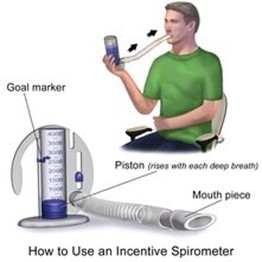The nurse is discussing car safety with the mother of a 6-year-old child. The child’s mother questions the need for the use of special car seats for her child. What information can be provided to her?
“Car seats are recommended until children are at least 10 years old/
“Your child will be safe in the car using the provided shoulder harness and lap belts/
"At the age of 6 your child should be using a booster seat.'
"Car seats are only recommended until children are 3 years old."
The Correct Answer is C
Booster seats are recommended for children between the ages of 4 and 8, or until they are 4'9" tall. This is because seat belts are designed for adults and may not properly fit a child's smaller body. A booster seat helps to position the seat belt correctly on the child's body, improving the effectiveness of the seat belt and reducing the risk of injury in the event of a crash.
Option a is incorrect because 10 years old is too old to need a car seat. Option b is incorrect because children under the age of 8, or under 4'9" tall, should not use a seat belt alone. Option d is incorrect because car seats are recommended until children are at least 4 years old, not 3.
Nursing Test Bank
Naxlex Comprehensive Predictor Exams
Related Questions
Correct Answer is B
Explanation
Crackles, also known as rales, are discontinuous sounds that are typically heard during inspiration in patients with heart failure. These sounds are produced by the sudden opening of small airways and alveoli that are filled with fluid or collapsed due to pulmonary congestion. The sound can be described as similar to the sound of rubbing hair between fingers or the sound of Velcro being pulled apart.
Rhonchi are continuous, low-pitched sounds that are typically heard during expiration and are caused by the movement of air through narrowed airways, such as in patients with chronic obstructive pulmonary disease (COPD). Stridor is a high-pitched, continuous sound that is typically heard during inspiration and indicates upper airway obstruction, which can be life-threatening. Neither rhonchi nor stridor are typically heard in patients with heart failure.
Therefore, based on the patient's history and symptoms, the most likely type of breathing sound to be heard on auscultation is crackles/rales.

Correct Answer is C
Explanation
An Incentive Spirometer is a device that helps patients take deep breaths and improve their lung function. It encourages patients to take deep breaths and to hold them for a few seconds. The device also helps to monitor and measure lung volume. By using an incentive spirometer, MA can expand her lung volume as much as possible and allow for proper oxygen blood exchange within the alveoli. This is an important technique to help prevent pneumonia and other respiratory complications.
The other options mentioned, 4L of oxygen via Nasal Cannula, Fluter Valve, and Abdominal Binder, are not appropriate devices to help MA achieve proper breathing techniques and expand lung volume. 4L of oxygen via Nasal Cannula is used to provide supplemental oxygen to patients who have difficulty breathing. Fluter Valve is a handheld device used for airway clearance in patients with chronic obstructive pulmonary disease (COPD) or cystic fibrosis. An abdominal binder is a wrap that is placed around the abdomen to support the abdominal muscles and help reduce pain after surgery or injury. These devices do not help improve lung function and are not appropriate for MA's condition.

Whether you are a student looking to ace your exams or a practicing nurse seeking to enhance your expertise , our nursing education contents will empower you with the confidence and competence to make a difference in the lives of patients and become a respected leader in the healthcare field.
Visit Naxlex, invest in your future and unlock endless possibilities with our unparalleled nursing education contents today
Report Wrong Answer on the Current Question
Do you disagree with the answer? If yes, what is your expected answer? Explain.
Kindly be descriptive with the issue you are facing.
